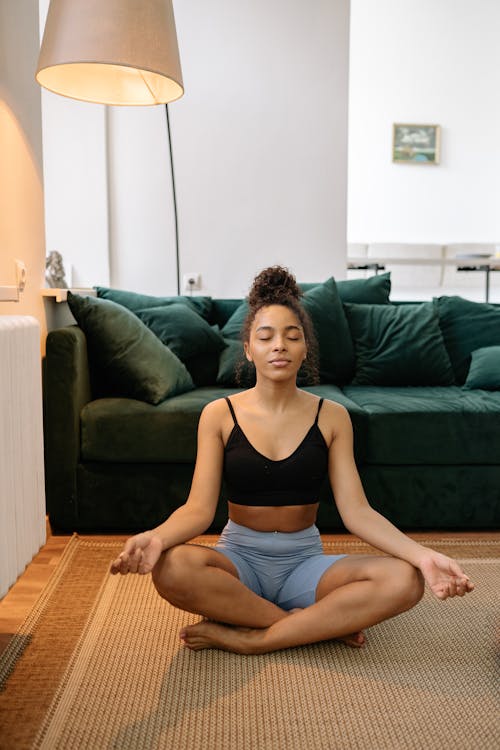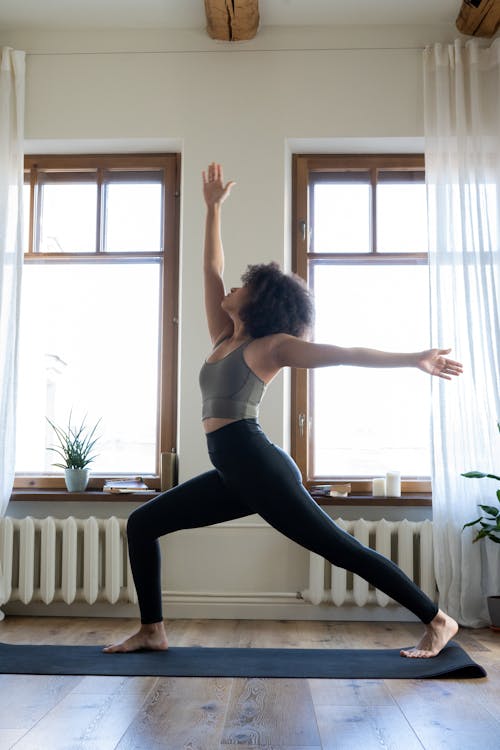How to Create a Home Yoga Space: A Comprehensive Guide
In today's fast-paced world, creating a peaceful sanctuary within your home where you can practice yoga is more important than ever. Whether you're a seasoned yogi or a beginner, having a dedicated space for your practice can significantly enhance your experience. In this guide, we’ll walk you through how to create a home yoga space that is serene, functional, and inspiring.

Why You Need a Home Yoga Space
Practicing yoga at home offers flexibility and convenience. It allows you to fit in your sessions around your schedule and practice at your own pace. A home yoga space can also serve as a personal retreat where you can escape from the stresses of daily life. Moreover, having a dedicated space can help you stay consistent with your practice, fostering both physical and mental well-being.
Choosing the Right Space
Location, Location, Location
The first step in creating a home yoga space is selecting the right location. Look for a quiet, uncluttered area with plenty of natural light. Ideally, this space should be away from high-traffic areas in your home to minimize distractions. A spare room, a section of your bedroom, or even a quiet corner of your living room can work well.
Size and Layout

You don’t need a large area to practice yoga. A space that can comfortably fit your yoga mat, with some room to stretch, is sufficient. Ensure there is enough clearance around you to perform various poses without bumping into furniture. If space is limited, consider multi-functional areas that can be easily converted into a yoga space when needed.
Designing Your Yoga Sanctuary
Flooring
The type of flooring in your yoga space is crucial. Hardwood or laminate flooring is ideal as it provides a stable and even surface. If you have carpet, consider placing a sturdy yoga mat or a yoga rug on top to create a firm base. Avoid practicing on overly plush carpets or uneven surfaces as they can affect your balance and alignment.
Lighting
Natural light is the best option for your yoga space as it creates a serene and uplifting atmosphere. Position your mat near a window if possible. For evening sessions or rooms with limited natural light, opt for soft, warm lighting. Avoid harsh fluorescent lights that can be jarring. Consider using lamps, candles, or string lights to create a calming ambiance.

Color Scheme
The colors in your yoga space can significantly impact your mood and practice. Choose calming, neutral colors such as soft whites, earthy browns, or soothing pastels. Avoid overly bright or stimulating colors that can be distracting. You can add pops of color through accessories like cushions, blankets, or wall art.
Ventilation
Good ventilation is essential for a comfortable practice. If your space has windows, open them to allow fresh air to circulate. If not, consider using a fan or air purifier to keep the air fresh and clean. Avoid practicing in spaces that feel stuffy or cramped.
Essential Yoga Equipment and Accessories
Yoga Mat
A high-quality yoga mat is a must-have for any home yoga space. Look for a mat that provides sufficient cushioning and grip. The thickness of the mat can vary based on your preference and the type of yoga you practice. For instance, a thicker mat offers more cushioning, which can be beneficial for restorative yoga, while a thinner mat provides better stability for balance poses.
Props and Accessories
Yoga props can enhance your practice by providing support and helping you achieve proper alignment. Some essential props to consider include:

- Yoga Blocks: Useful for modifying poses and providing support.
- Yoga Straps: Help with stretching and improving flexibility.
- Bolsters: Provide comfort and support, especially in restorative poses.
- Blankets: Can be used for added support or warmth during relaxation.
- Meditation Cushions: Offer comfort during seated meditation.
Storage Solutions
Keeping your yoga space tidy and organized can help maintain a peaceful atmosphere. Invest in storage solutions such as shelves, baskets, or bins to store your props and accessories when not in use. This not only keeps your space clutter-free but also makes it easy to access everything you need for your practice.
Personalizing Your Yoga Space
Inspirational Decor
Personalizing your yoga space with decor that inspires and motivates you can enhance your practice. Consider adding elements like:
- Wall Art: Choose prints or paintings that resonate with you and evoke a sense of peace.
- Plants: Indoor plants can purify the air and bring a touch of nature into your space.
- Crystals: If you’re into holistic healing, crystals can add positive energy and a touch of beauty.
- Essential Oils: Use a diffuser to fill your space with calming scents like lavender, eucalyptus, or sandalwood.
Creating a Zen Atmosphere
To make your yoga space truly serene, focus on creating a Zen-like atmosphere. This can be achieved through:
- Sound: Soft background music or nature sounds can enhance relaxation. Consider using a speaker or a sound machine.
- Textures: Incorporate soft and comfortable textures like cushions, blankets, and rugs.
- Minimalism: Keep the space simple and clutter-free to promote a sense of calm and focus.
Setting Up a Routine

Consistency is Key
Having a dedicated yoga space is only the first step. To truly benefit from it, establish a consistent practice routine. Set a specific time each day for your yoga practice and stick to it. Whether it’s in the morning to start your day with energy or in the evening to unwind, consistency is key to reaping the benefits of yoga.
Creating Rituals
Incorporate rituals into your practice to make it more meaningful and enjoyable. This could be lighting a candle or incense before you begin, spending a few minutes in meditation, or setting an intention for your practice. These small rituals can help you transition into your practice and create a deeper connection with your yoga space.
Benefits of a Home Yoga Space
Convenience and Flexibility
One of the biggest advantages of having a home yoga space is the convenience it offers. You can practice at any time that suits your schedule without the need to commute to a studio. This flexibility can help you integrate yoga more easily into your daily routine.
Cost-Effective
Practicing yoga at home can be more cost-effective than attending classes at a studio. Once you have your space set up and have invested in some basic equipment, there are minimal ongoing costs. You can access a wealth of free or low-cost online classes and resources to guide your practice.
Personalized Practice

Having a home yoga space allows you to tailor your practice to your individual needs and preferences. You can choose the type of yoga, the length of your sessions, and the pace that works best for you. This personalized approach can enhance your practice and make it more enjoyable.
Enhanced Focus and Mindfulness
Practicing in a dedicated space free from distractions can help you stay focused and present during your yoga sessions. This can deepen your mindfulness and enhance the overall benefits of your practice.
Conclusion
Creating a home yoga space is an investment in your well-being. It provides a sanctuary where you can practice yoga consistently and reap its many physical and mental benefits. By carefully choosing your space, designing it thoughtfully, and incorporating essential equipment and personal touches, you can create a serene and inspiring environment that supports your yoga journey.

 Cricket Score Counter
Cricket Score Counter Heads or Tails
Heads or Tails
You have not logged in, please Login to comment.